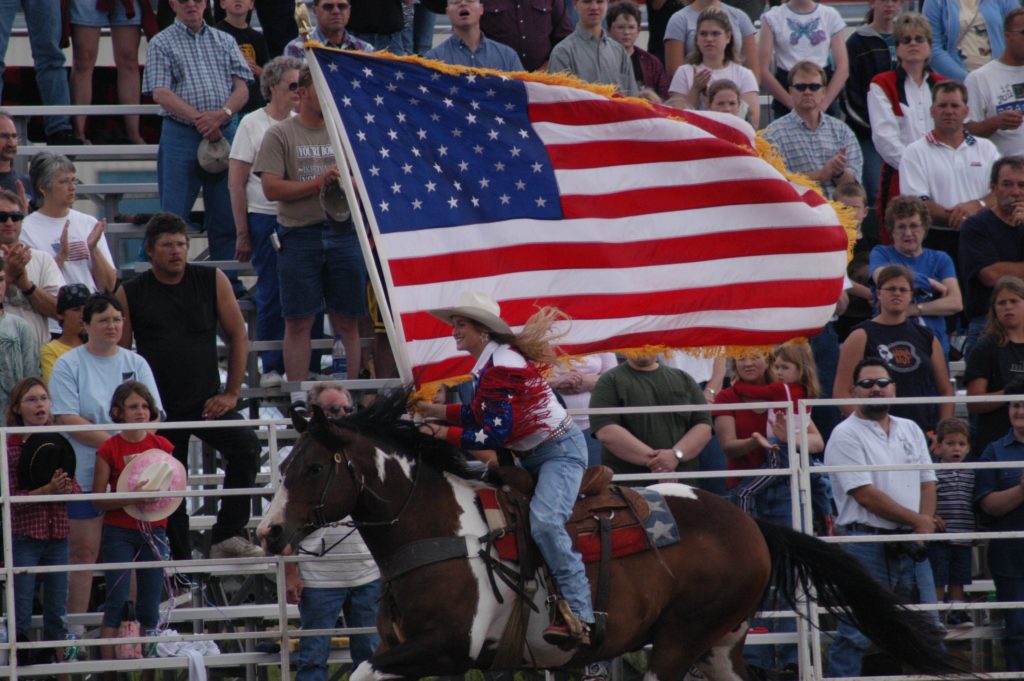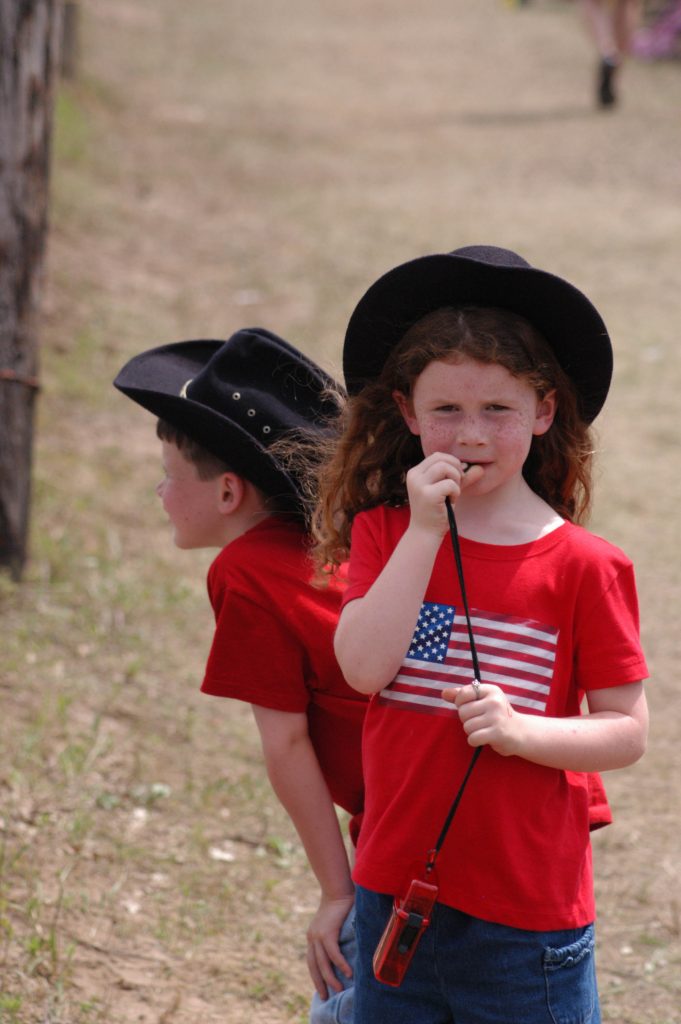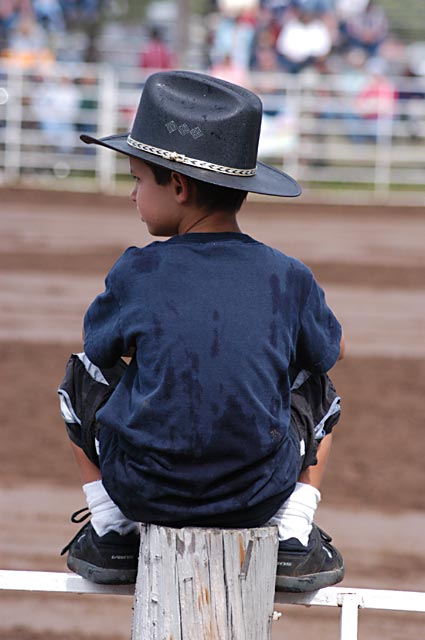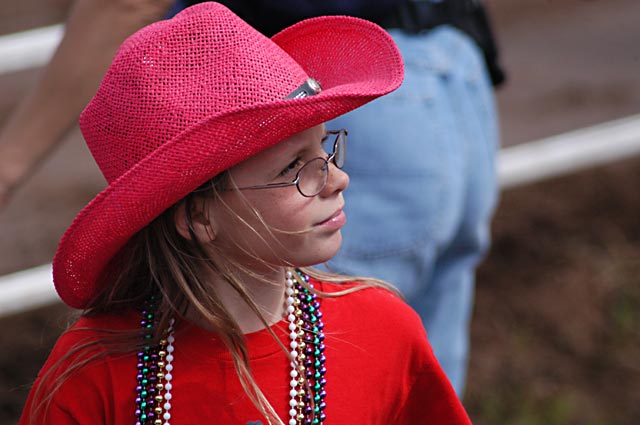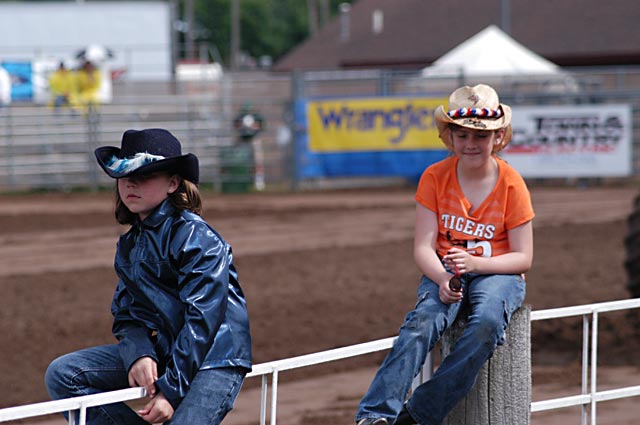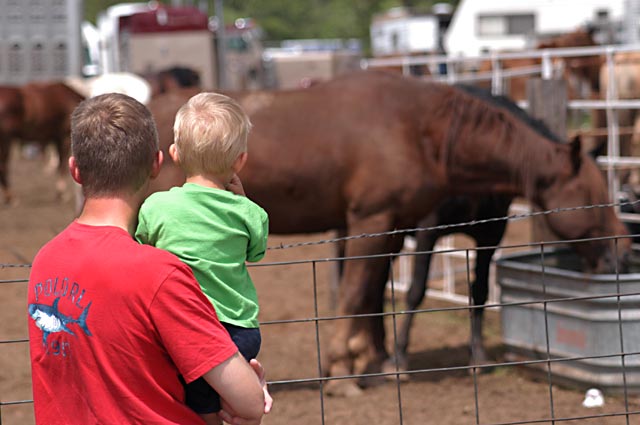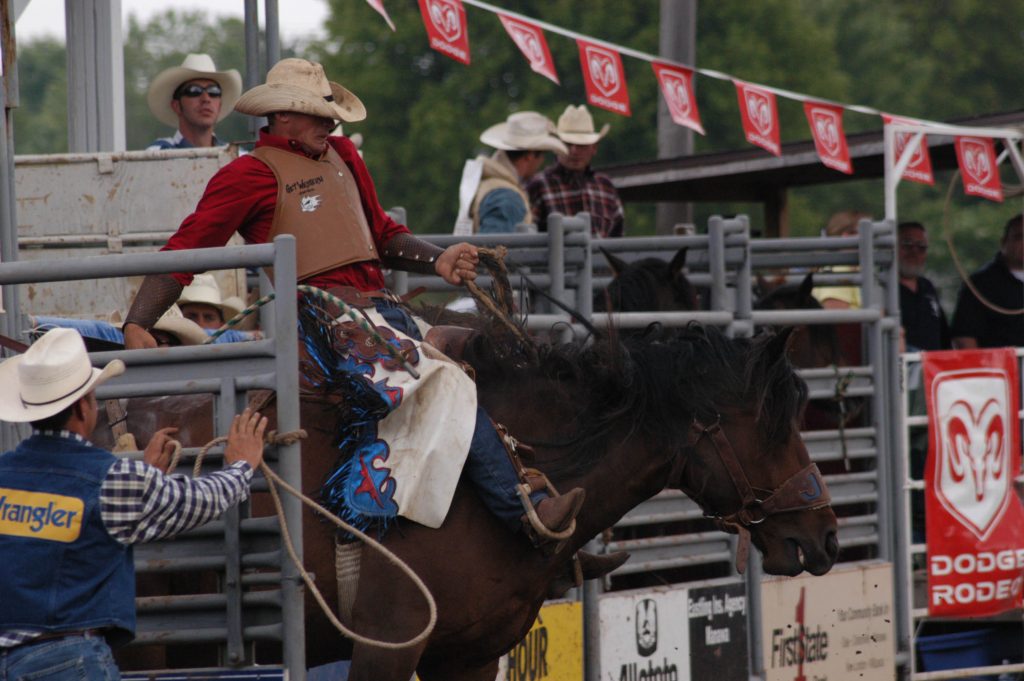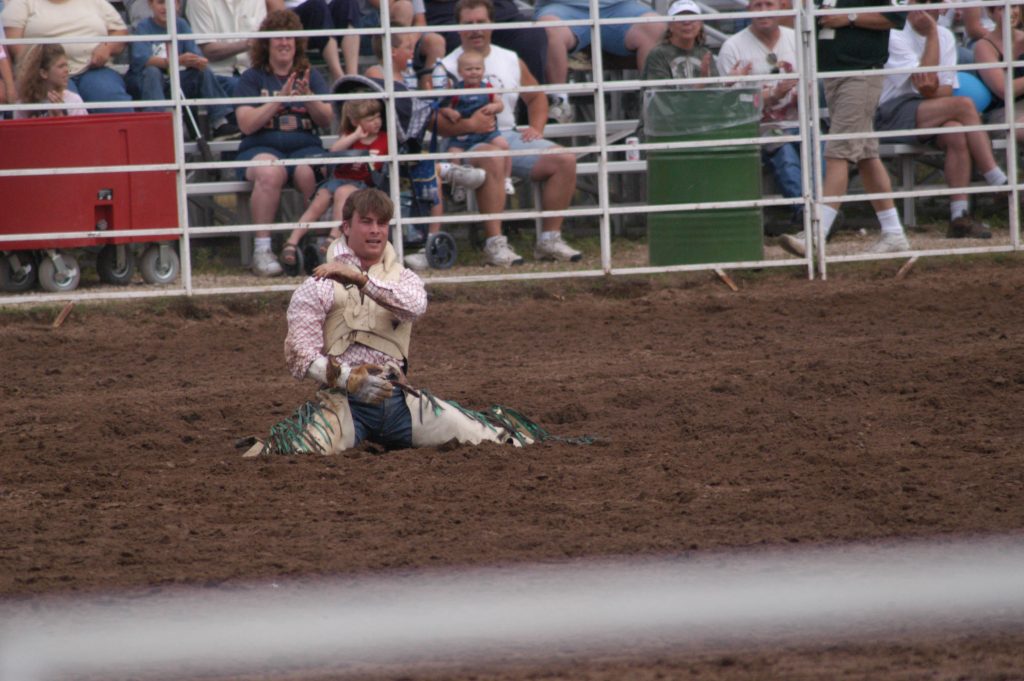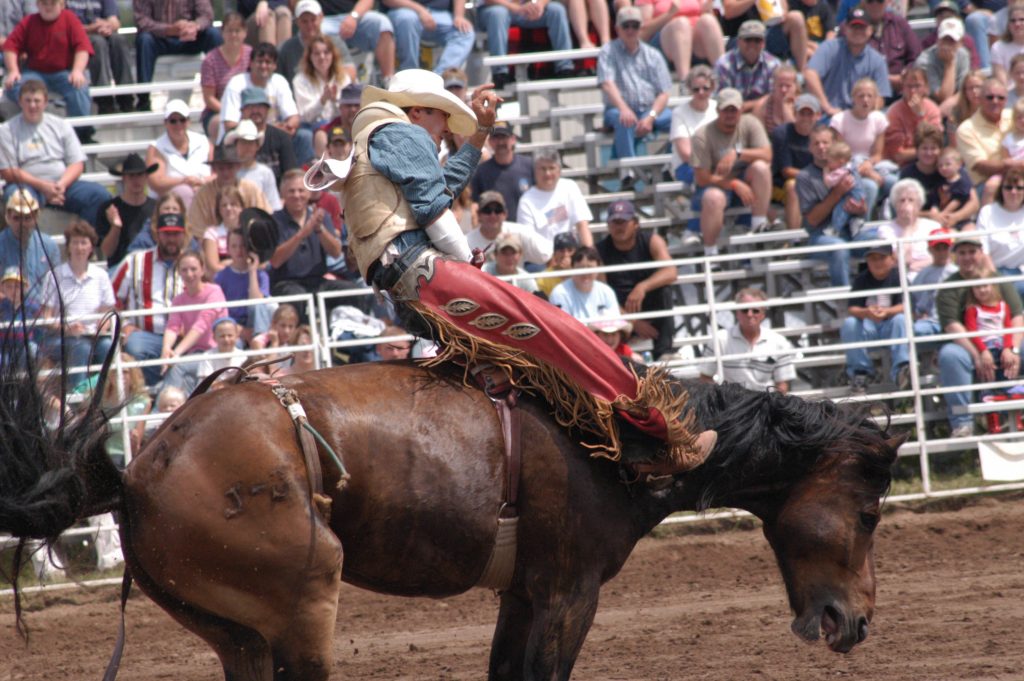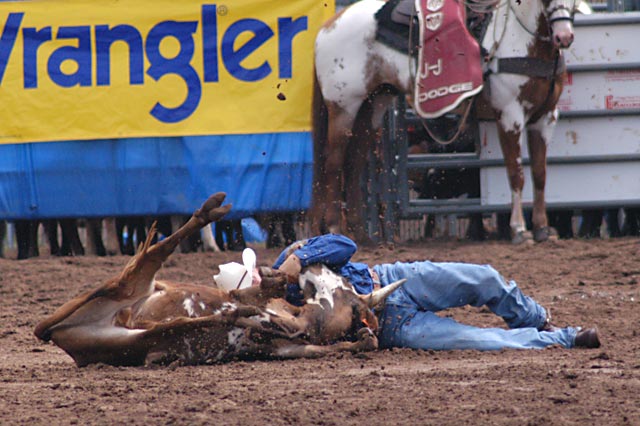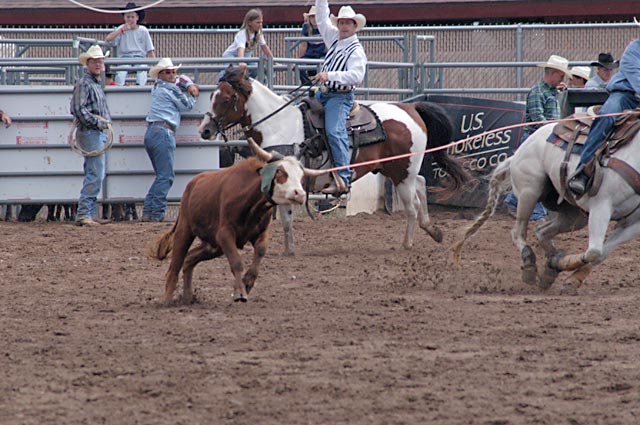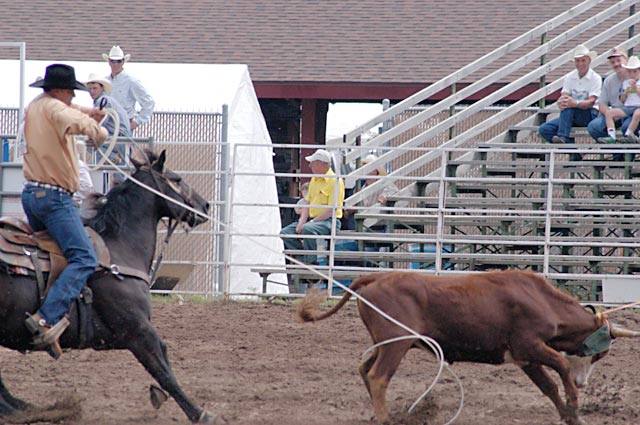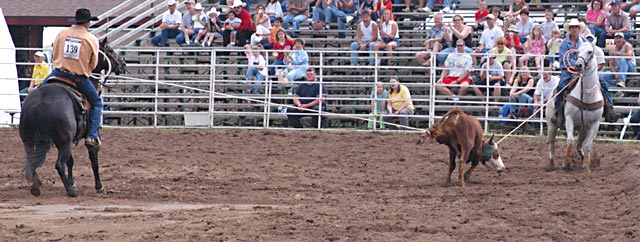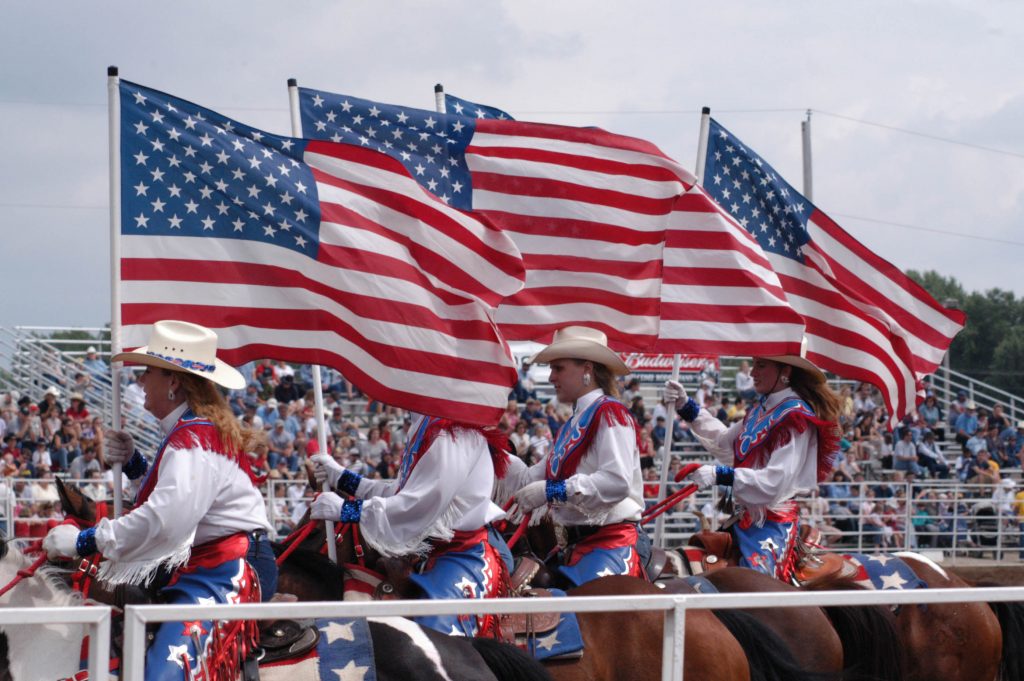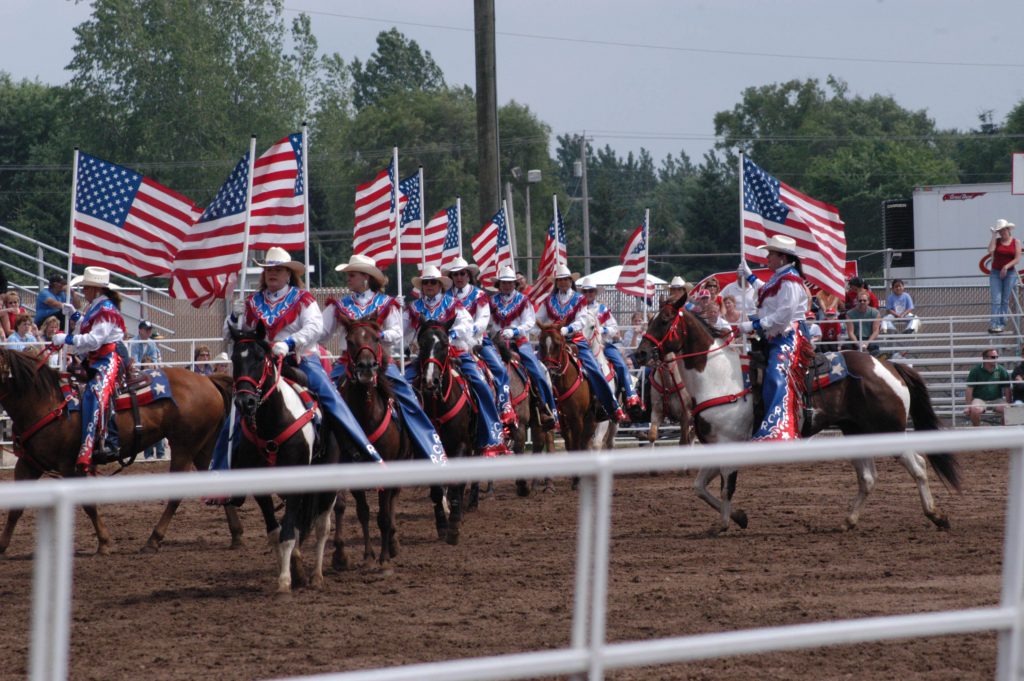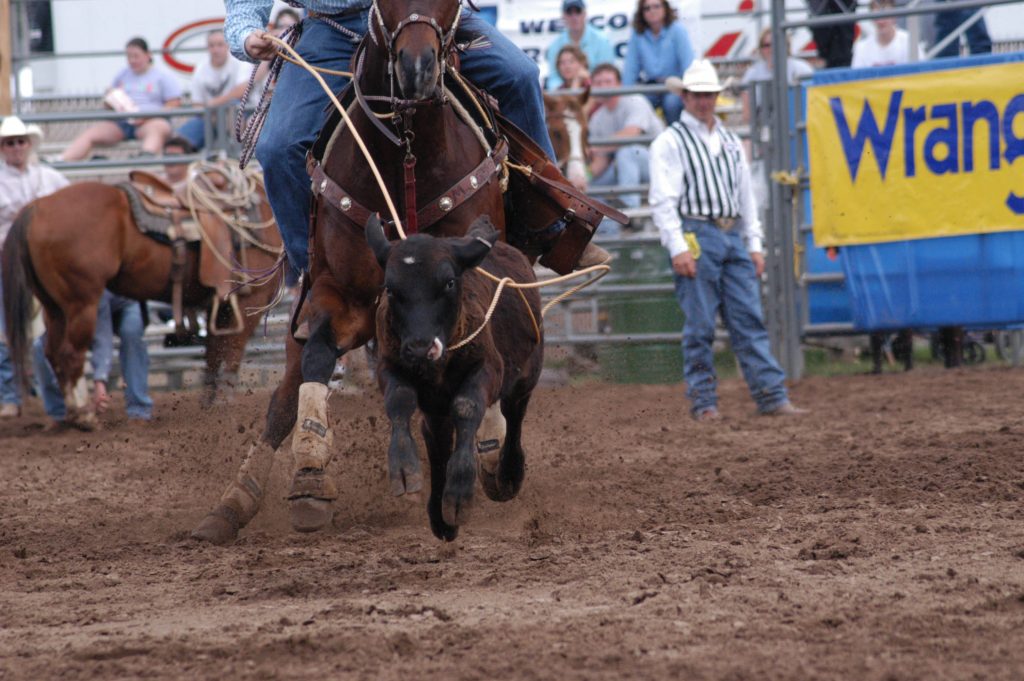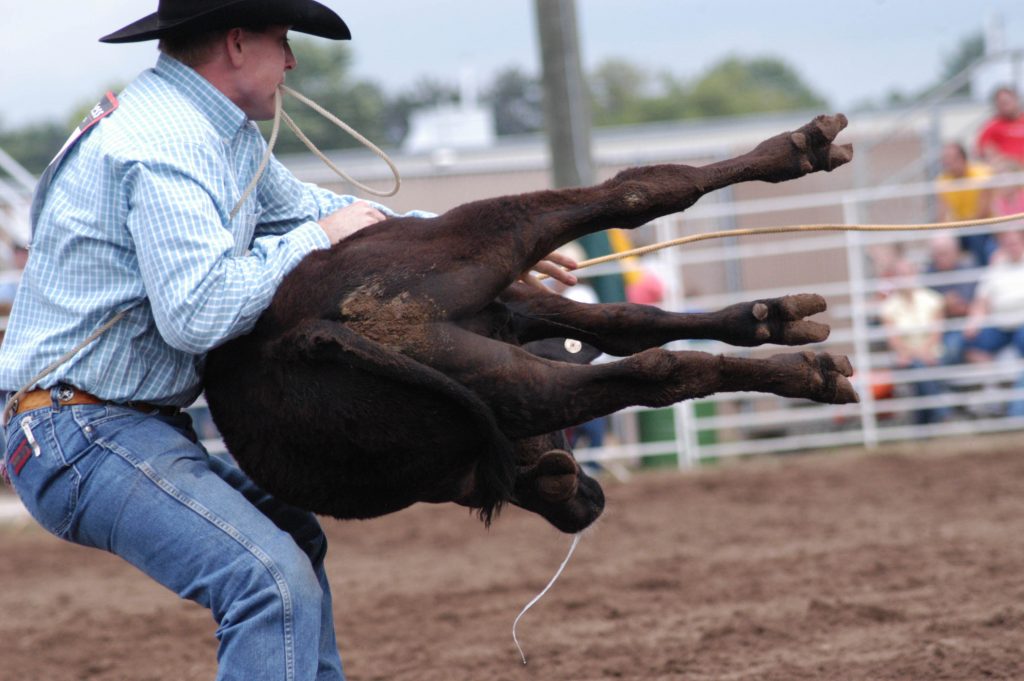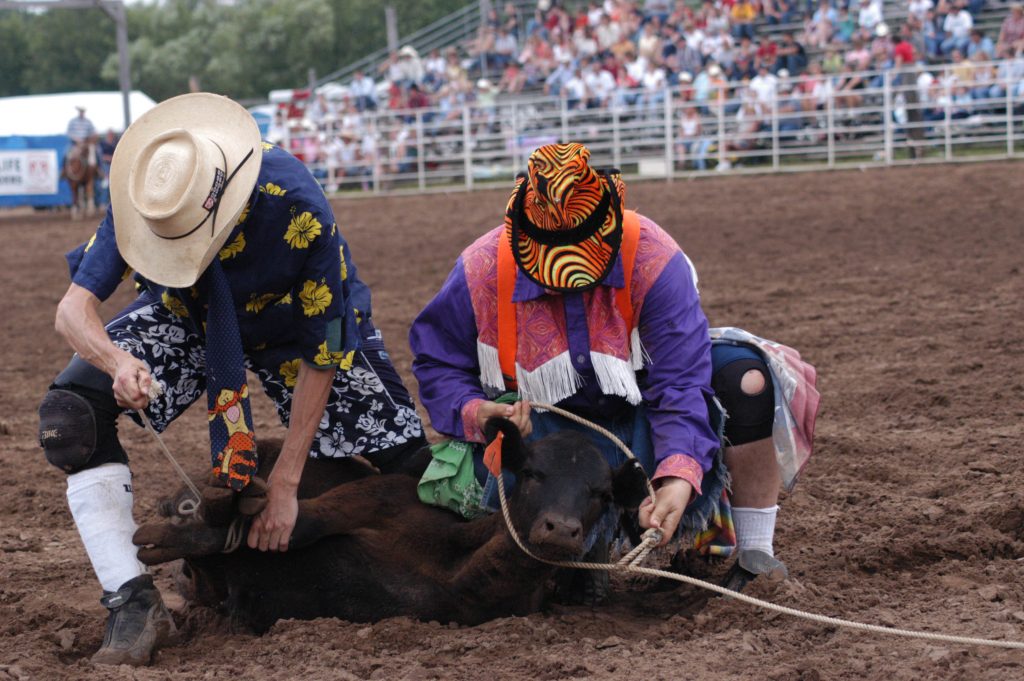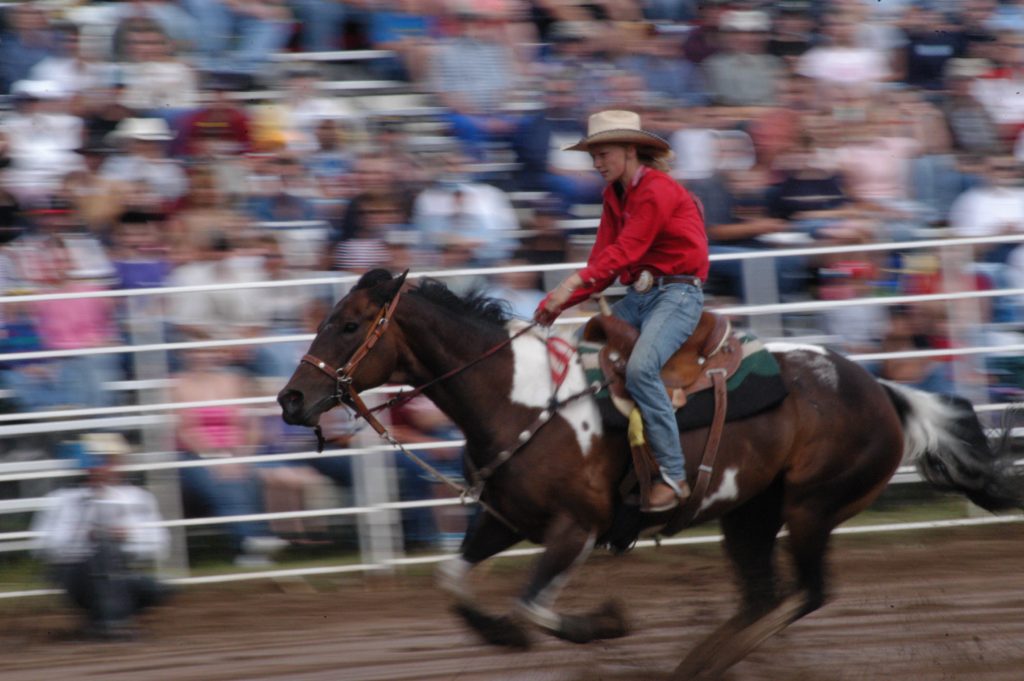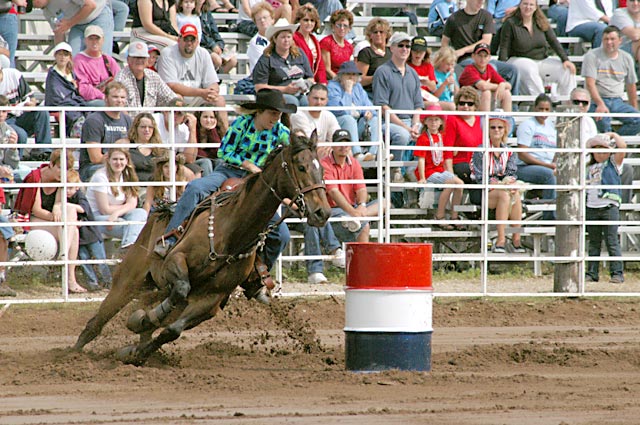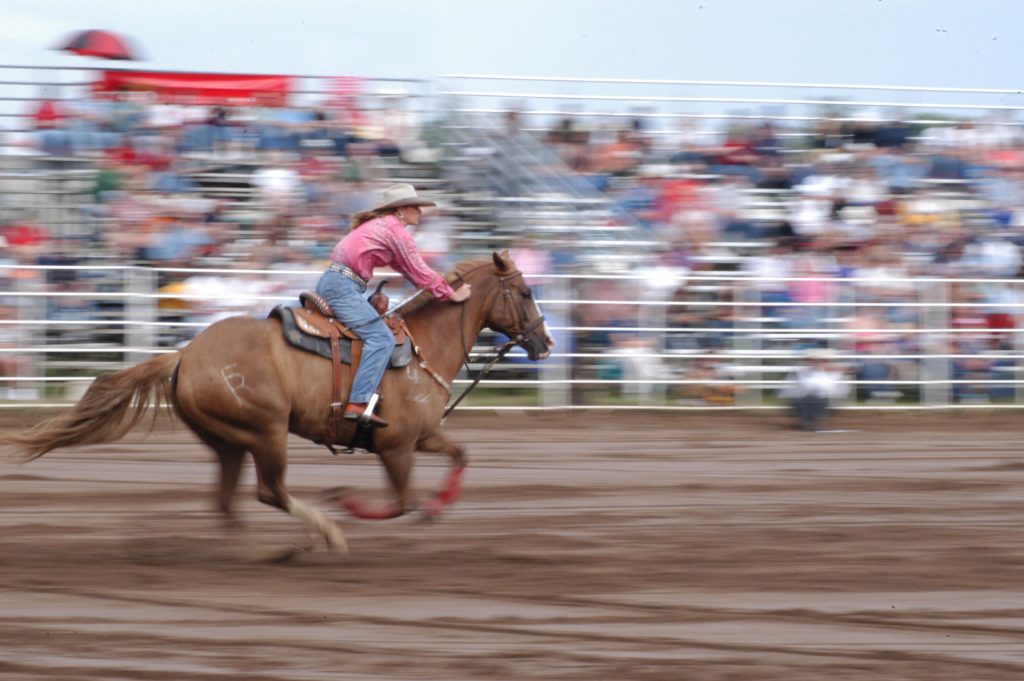On July 4, 2004, we went to the 46th Annual Manawa Rodeo with Chris’s parents. The day was overcast and threatening rain. The cloud cover kept the temperatures cool, and there was only one bout of rain that pretty much coincided with the intermission of the rodeo.
Thanks to About.com for much of the rodeo information on this page.
There were lots of children at the rodeo. Many were dressed in western wear, and all were fascinated by the animals and the cowboys.
Bareback Bronco Riding
In this event, cowboys ride “bareback” on rough horses and use a leather rigging, which looks like a heavy piece of leather with a suitcase handle. The cowboys ride one handed and cannot touch themselves or the horse with their free hand. The cowboys spur the horse from shoulder to rigging, trying make a qualified ride of 8 seconds. Once the ride is completed, pick-up men swoop in to “pick up” the rider and set him safely on the ground.
Cowboys are judged on their control and spurring technique, and the horses are judged on their power, speed, and agility.
Steer Wrestling
Steer wrestling is a timed event, and cowboys compete against each other and the clock.
Bulldoggers start out in the box. As soon as the cowboy nods his head the steer is released and he charges after it on his horse. The steer wrestler catches up to the steer as quickly as possible and then leans over, jumps off of his horse and grabs the steer by its head. The bulldogger then plants his feet and tosses the steer onto its side, thereby stopping the clock.
Team Roping
Team roping is the only team event in rodeo. It is a timed event that relies on the cooperation and skill of the cowboys and their horses.
One cowboy, known as the header, ropes the head of the cattle. The other cowboy, known as the heeler, ropes the heels or legs. As with the other timed events, the team ropers start from the box. The header is the first out trying to rope the head as quickly as possible without breaking the barrier. Once the catch is made the header dallies and turns the steer left. This opens up the way for the heeler to work his magic and rope the legs. The clock is stopped when there is no slack in both ropes and the horses face each other.
Calf Roping
Tie-down ropers compete against each other and the clock for the prize money. Like the steer wrestlers and team ropers, tie-down ropers start in the box ready to compete. The calf is released and the cowboy must rope it as quickly as possible.
As soon as a catch is made the cowboy dismounts, sprints to the calf and tosses it on its side, which is called flanking. With a small rope known as a pigging string, usually held in the cowboy’s teeth, any three of the calf’s legs are tied securely. Time stops when the cowboy throws up his hands.
After the tie, the roper remounts his horse, puts slack in his rope and waits 6 seconds for the calf to struggle free. If it does, the cowboy receives a no time and is effectively disqualified from the round. If the calf remains tied the cowboy receives his time.
Clowns
The rodeo clown was mic’d-up and kept a running banter with the rodeo announcer. He also performed physical comedy, such as this trampoline act. Other clowns helped protect the riders and released the roped livestock.
Barrel Racing
Barrel racing is a timed rodeo event, where the fastest time is what matters most. Cowgirls compete in the arena against each other and the clock. Three barrels are set up at different marked locations. The riders enter the arena at full speed, quickly rounding each barrel in a cloverleaf pattern and then exiting where they entered.
Speed is what it is all about in this event. The riders steer their horses as close as they can to the barrels trying to shave precious seconds off the clock. For each barrel they knock over a 5 second penalty is assessed to their total time.
Bull Riding
Bull riders ride with one hand and cannot touch themselves or their bull with the free hand. Doing so results in a no score. Scoring is the same as in the other roughstock events. Two judges give 1-25 points for the cowboys performance and 1-25 points for the animals performance. 100 points being the maximum, and is considered a perfect ride.
To ride, bull riders use a bullrope and rosin. The bullrope is a thickly braided rope with a cowbell attached. The cowbell acts as a weight, allowing the rope to safely fall off the bull when the ride is over. The rosin is a sticky substance that increases the grip on their ropes. Bull riders wrap their bullrope around the bull and use the remainder to wrap around their hand tightly, trying to secure themselves to the bull.
Cowboys can spur for extra points, but just staying on the bull for 8 seconds is the main priority. After the ride, bull riders are aided by bullfighters or rodeo clowns and barrelmen who distract the bull, allowing the cowboys to escape safely.
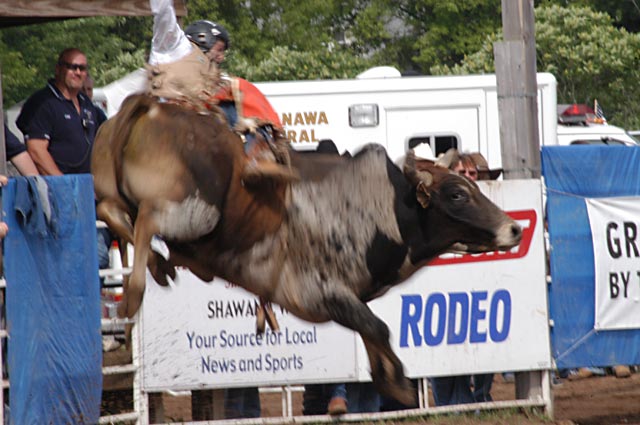
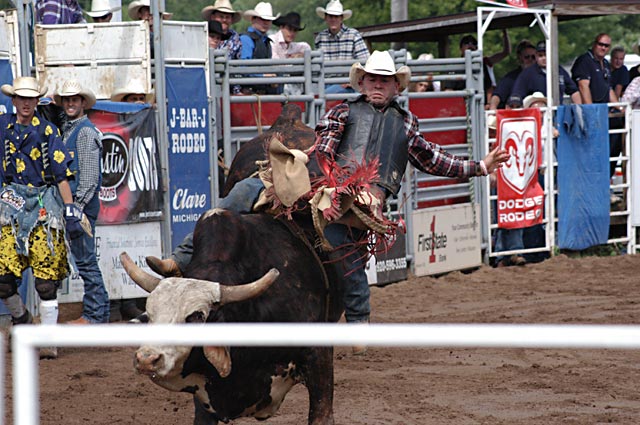

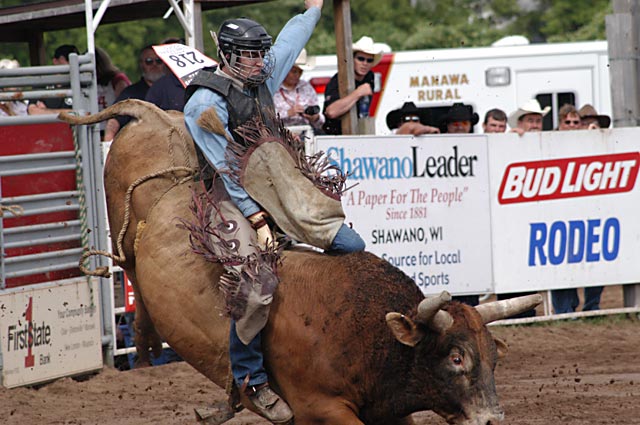
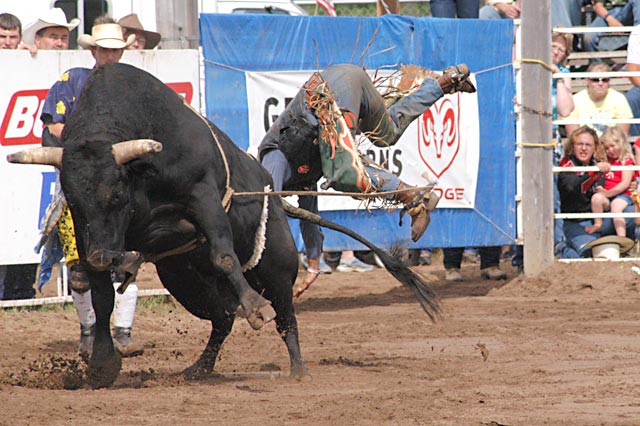
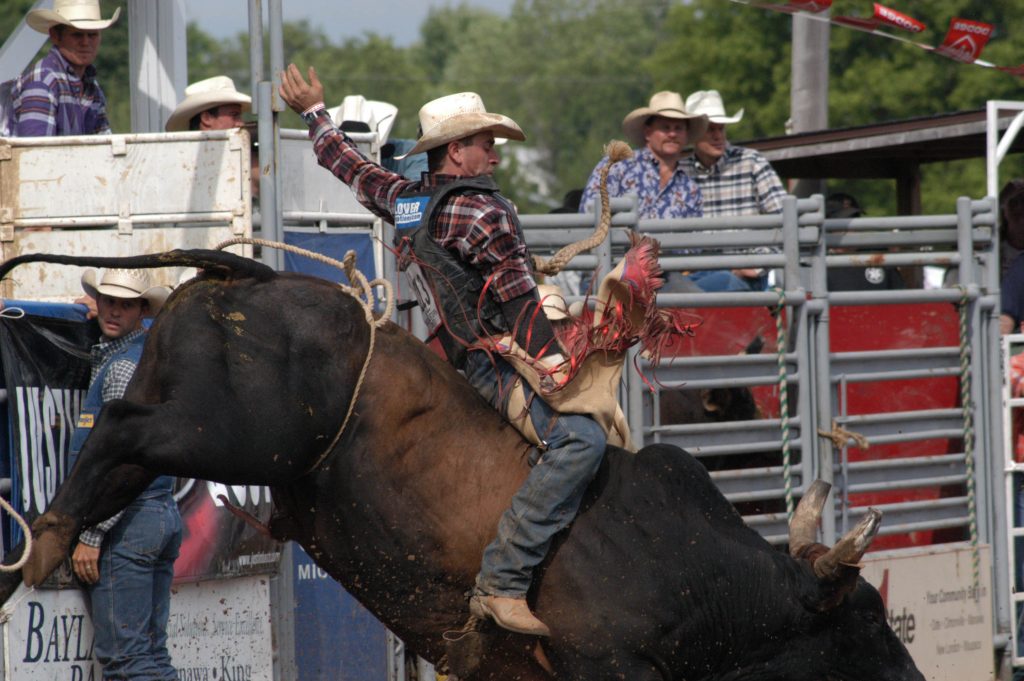
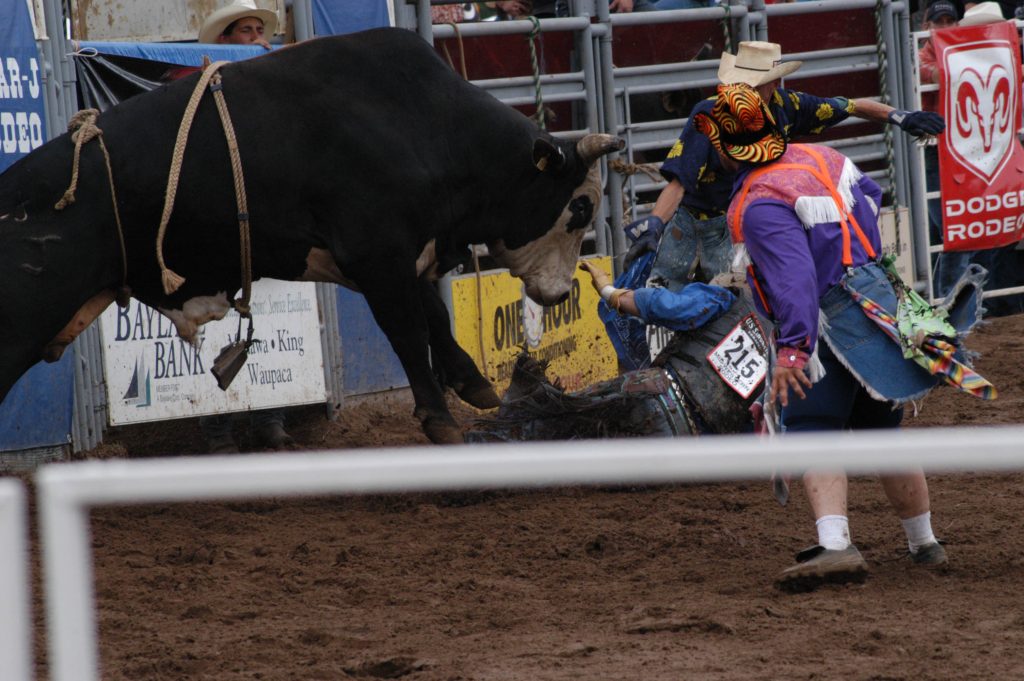
This cowboy was run over by the bull, but apparently he avoided being stepped on.
